18 December 2009
Grandage's Wheatbelt, Abbott's Bundle of Joy and Jarman's Pemulwuy
a conductor's perspective
 Image: Robert Braham
Image: Robert Braham Dr Robert Braham, Director of Music at Trinity College, Perth and the founding conductor of the Western Australian Youth Chorale, introduces three Australian works, Iain Grandage's Wheatbelt, Katy Abbott's Bundle of Joy and Paul Jarman's Pemulwuy.
Iain Grandage: Wheatbelt; text by Kevin Gillam
Wheatbelt was commissioned by the Australian Society for Music Education (ASME) for the Western Australian Youth Chorale in 2007. The text is from the poem by Western Australian poet and musician, Kevin Gillam. This is a marvellously evocative setting for SSAATBB unaccompanied choir - unaccompanied, that is, except for the three harmonic whirlies pitched in B, C and D, played by two players. While the female parts are split for the whole song, the basses only move into two parts where the chord requires, and in the short male soli section. The use of guiro, small egg shaker and wind chimes, all played by choir members, are used in conjunction with improvised cicada, bird and wind noises in the most subtle and evocative moments. The piece varies in length depending on how long you wish to linger over these evocative moments. It certainly needs eight or nine minutes to adequately create 'Wheatbelt'.
The work portrays the hot summer of a Western Australian wheat-farming scene. The wheatbelt is a large strip of farmland across Western Australia's south-western corner, stretching inland further than farmland is realistically sustainable. Grandage's piece goes to the heart of the landscape as does the original poem. Heat, hot easterly breezes, the view from a rocking chair on an old verandah, sunburnt bones, running your hands across the wheat - all these images are described in the music.
The work begins with a single whirlie playing a pedal B to which is added the just audible bass and then tenor parts, outlining the open B-F# on the word 'land'. The C whirlie joins, followed by the female parts leaning on a G, before joining the open 5th. This harmonic appoggiatura effect is used to great effect as the dynamic quickly rises to a fortissimo sustained chord on the word 'cry', with an interplay of notes around the G-major chord creating a huge, sobbing effect. The piece ends in similar fashion, mysteriously and with some flexibility in tempo on the same line of text .'This land won't cry when you leave'.
After this opening statement, which moves from mysterious to intense and back, the succeeding section paints, through sound, the image of someone sitting on a wicker chair on the verandah, looking over the balustrade through the white heat and listening to the stirring easterly wind. The melody sung by sopranos, harmonised in parallel thirds, gives a relaxed and possibly false sense of ease or laziness as it interrupts the long-held soft pedal points over which individual choir members add the breeze, the creaking chair, an occasional bird call, and a subtle use of selected wind chimes.
Music example 1 (click to enlarge) - Wheatbelt, bars 24-27
Before long, the stirring easterly takes prominence, with the composer using onomatopoeia, exaggerating the 's' in the text 'eassterly sstirring'. All four female parts pick up this text and enter independently, repeating their similar melodic motifs in waves of sound.
Music example 2 (click to enlarge) - Wheatbelt, bars 39-41
It is then up to the males to move the text forward with further Australiana: peppermint leaves, screeching galahs and ghost gums. The mood is changing with the warmth and strength in the lower parts, the increasing tempo and the gradual fading of the easterly breeze.
The accelerando, increasing dynamics and rising intervals (word painting at its best) move seamlessly into the Allegro section of the song, a climactic point emphasised with the return of the D whirlie, now given the liberty of freely improvising over the full range of its harmonics. The effort involved by the whirlie player adds a certain intensity to the moment. The shifting metre from 4/4 to 5/8 acts as a gear change before settling into the rollicking 6/8 rhythms where the altos, set against the rest of the choir, get to enjoy the most active parts. The contrast with the longer note values and hemiolas of the melody and harmony parts creates a most effective texture.
Music example 3 (click to see full example) - Wheatbelt, bars 59-84
After a brief return of the 5/8, which serves to emphasise the key change, the altos resume their rhythmic moment but now in imitative entries. All parts are imbued with a sense of wave motion, with rising and falling dynamics, and a very sustained energy, brought to a halt by the braking 5/8 bars. The long pauses, subtly punctuated by the vocal effects and gentle percussion, return with the images of wheat and the verandah. Grandage then returns us to the introductory material, this time in C minor and with subtle dissonance, the crying motif and the word 'land' from where it all began.
This has been a thoroughly enjoyable work to sing with the youthful choristers, who also gave the premiere performance back in 2007, bringing to life the images so vividly depicted by Grandage's setting of the text.
Bundle of Joy by Katy Abbott; text by Liz Ward
Katy Abbott describes her music in her own words: '...I seek to unpack the human side of life; humour, foibles, quirky things we do and say, beauty, grief and friendship'. Bundle of Joy falls into the quirky and humorous category. The clarity of the setting ensures that the humour is not lost on the audience.
'Bundle of Joy' is a three-line poem by Liz Ward. Abbott uses the second line of the poem (In winter Alice distractedly played with the bundle of rubber bands in the pocket) as an opening statement, spoken first between a solo soprano and bass voice, then repeated multiple times by all voices ad lib, creating the complex texture that surprises the audience on first hearing, before fading to a single voice completing the final sentence. These spoken parts need to be animated, with attention paid to where the voices are pitched. Rhythms are suggested for these spoken phrases, but the more natural the metre and phrasing, the more effective is the production. This opening gambit of a gradually thickening, then thinning, texture works best with a planned structure of voice entrances and exits.
The setting of the full poem begins with a simple contrary motion statement, moving out from middle C. A solo or small group is used to complete the line. The second line of text begins a new idea, this time imitative and ending with a suitably stretched cross rhythm for the words 'rubber bands'. The line is repeated, this time with the tenors beginning the imitation, and the rubber band triplets are extended to a climactic fortissimo. Another small group or solo phrase finishes the line and prepares us for the third and final line of the poem.
The third line of text also begins with the words 'the coat' and Abbott returns to her opening melodic material, but only briefly.
Music example 4 (click to enlarge) - Bundle of Joy, bars 33-46
The punchline - revealing that the bundle of rubber bands was actually a Huntsman spider - is clearly enunciated in the sopranos with a simple descending, syncopated staccato figure. There is still a humorous and quaint moment to come, as the huntsman 'stretched its elegant legs' and 'reflected on the joy of a total body massage'. The interplay of the imitative entries in the sopranos and altos becomes a fortissimo rhythmic unison with the entry of the tenors and basses. These staccato motifs, using the words 'total body', are most effective. The final word 'massage' is treated separately in an augmented version of the opening motif, again beginning on middle C. Add to this the crescendo over these two bars and a tight finish on the fourth beat, and you have an effective ending to a delightful little gem that relies on simple contrasting textures to describe Liz Ward's 'Bundle of Joy'.
Pemulwuy - music and text by Paul Jarman
Paul Jarman devotes an introductory page in his score to the story of Pemulwuy. He also includes a dedication to Eric Wilmot, who wrote the novel Pemulwuy, and to the Eora people. In brief, Pemulwuy was an Aboriginal leader of the Bidjigal Clan of the Eora nation. The land belonging to this clan is where Sydney stands today. Pemulwuy led Aboriginal resistance against the British from 1790 until his death in 1802. The legend of Pemulwuy is significant to the Aboriginal people of the region, but he gets little mention in the official history of this period.
The original version of Jarman's work was for SSA and commissioned by the Woden Valley Youth Choir in 2005. The version I will discuss here is the TTBB adaptation. It is an exciting work for male chorus, full of rhythmic energy, interesting harmonies, very singable vocal lines and textural contrast. Its robust nature makes it a popular song for a capable senior secondary male choir, or indeed an adult male chorus.
Jarman's lyrics include Aboriginal language from the Eora nation. These statements are used as an introductory section and as punctuating statements between the English verses. The first line, 'Woyan Camya' (Is the crow here?) refers to the fact that Pemulwuy's totem was the crow. Throughout all the verses 'crow' and 'raven' are used to represent Pemulwuy, giving the man almost a mythical status. The use of the word Pemulwuy acts as a sort of chorus after verse two, then again at the end of the final verse. These imitative figures use three rhythmic versions of the same motif which together create a Pemulwuy chant. On each occasion, the use of bilma (clapping sticks) adds to the chant effect. The bilma parts are very simple but important and could be performed by choristers. Two or more sets are required to create the intensity of sound, and obtaining the real item is worth the effort as the quality of their sound is better than most percussion section imitations.
Music example 5 (click to enlarge) - Pemulwuy, final section bars 148-end
The piano part deserves some mention in this work. It is integral to the rhythmic drive of the piece, highly syncopated and in parts quite thickly scored. Jarman does, however, know how to use the piano to best effect, both supporting the choir and creating rhythmic and harmonic interest. The piano may be busy but it never usurps the choral parts. The moments where the piano has a static role, or indeed does not play, are also extremely effective; throwing the choral parts forward in unaccompanied statements of 'Woyan Camya', supporting unison singing with sustained chords in the fifth verse, 'They have come to take this land . . .', or in the subtle opening to the third verse where the piano has a soft pulsating rhythm over a drone bass.
Music example 6 (click to enlarge) - Pemulwuy, verse 5, bars 110-113
Part of the strength of the choral writing of this piece is that in most verses the parts are very homophonic. This creates solidarity in the male chorus, allowing the choir to exhibit its best tonal sonorities. Dynamic and textural contrast comes with the variety in the number of parts that sing each verse, and the graded crescendos through the verses. In verse two, the second tenors have an answering phrase to the first tenor and baritone parts but they come together for the climactic 'Hear the raven cry'.
Music example 7 (click to enlarge) - Pemulwuy, verse 2, bars 45-62
The more legato feel in the final verse 'This is what we've known since the dream time...' reflects the text beautifully with simpler choral rhythms, some nice harmonic shifts and a definite two-in-a-bar feel rather than the more driven four-in-a-bar. I highly recommend this piece. It captures the spirit and energy that a young male choir likes to exude and therefore makes it an exciting piece to both rehearse and perform. It also tells a tale that needs to be told.
Further links
Iain Grandage - AMC
profile
Wheatbelt music study guide - music by Iain Grandage;
study guide by Lorraine Milne - AMC Shop
Iain Grandage and his Wheatbelt -
article on Resonate
Katy Abbott - AMC profile
'Paul Jarman's Known Unto God and Pemulwuy'
- a Journal article by Paul Jarman
Paul Jarman's music is available through the composer -
A version of Pemulwuy for SAA, percussion and piano has
been published as part of the Young Voices
of Melbourne Choral Series, along with some other works by
Jarman.
© Australian Music Centre (2009) — Permission must be obtained from the AMC if you wish to reproduce this article either online or in print.
Subjects discussed by this article:
Dr Robert Braham is Director of Music at Trinity College, Perth, a boys' school with a strong choral tradition. As part of this role he conducts the three senior college choirs and is guest conductor for the Saint Mary’s Cathedral Choir. Robert was the founding conductor of the Western Australian Youth Chorale which sang in the national final of the ABC/FM Sing Out competition. With this choir he also conducted the Australian Young Composers’ Competition for the Australian Society for Music Education 2007 national conference. For 14 years, he was conductor of the Perth Oratorio Choir and has also prepared the WASO Chorus for Beethoven’s Ninth Symphony and Ravel’s Daphnis and Chloe. Other conducting engagements include many operetta and musical productions.
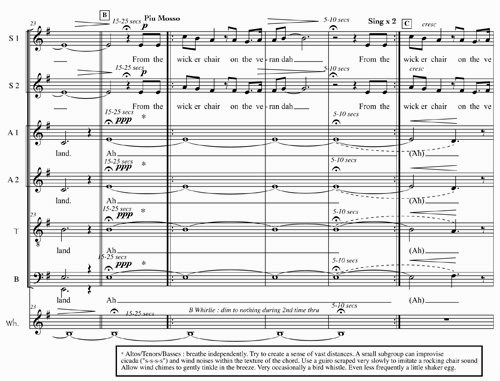
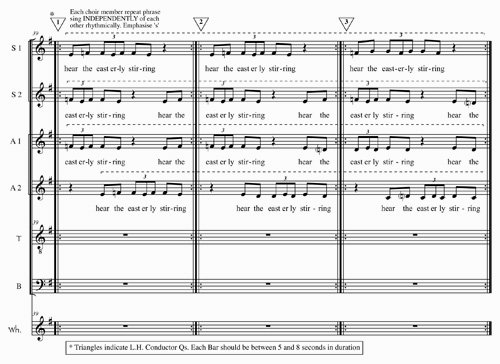
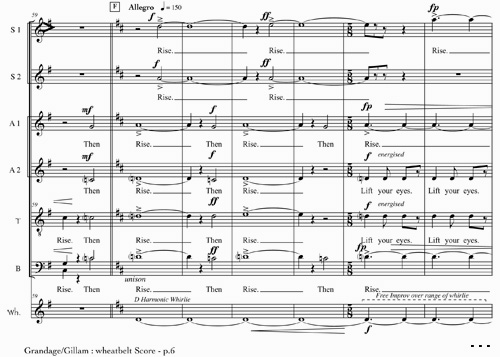
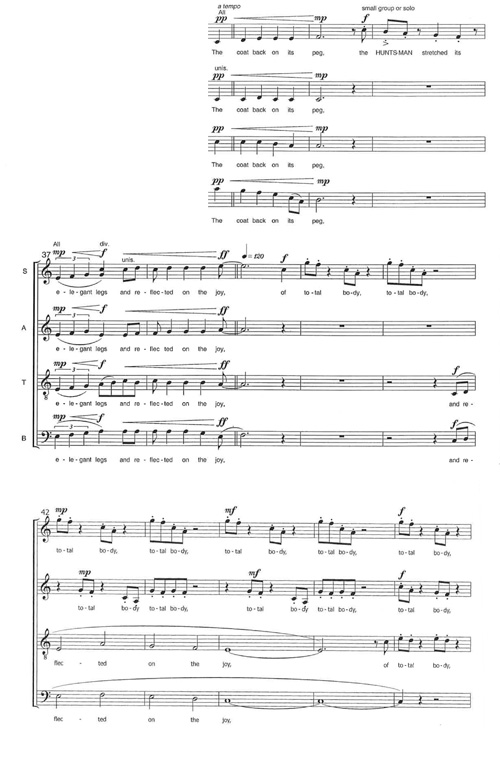
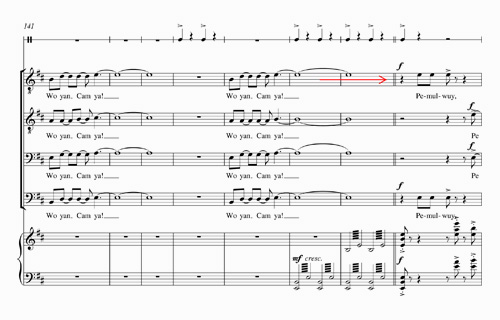
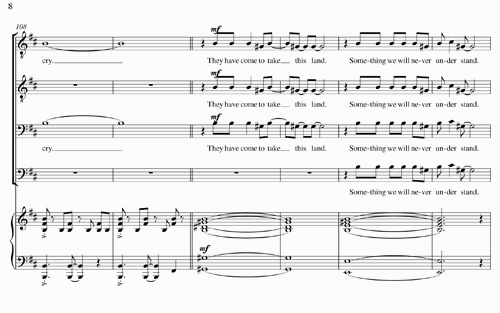
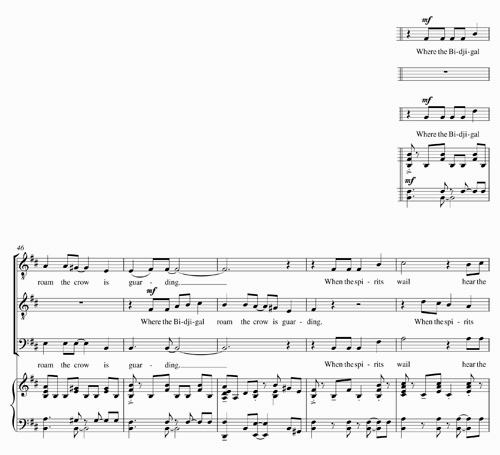
Comments
Be the first to share add your thoughts and opinions in response to this article.
You must login to post a comment.